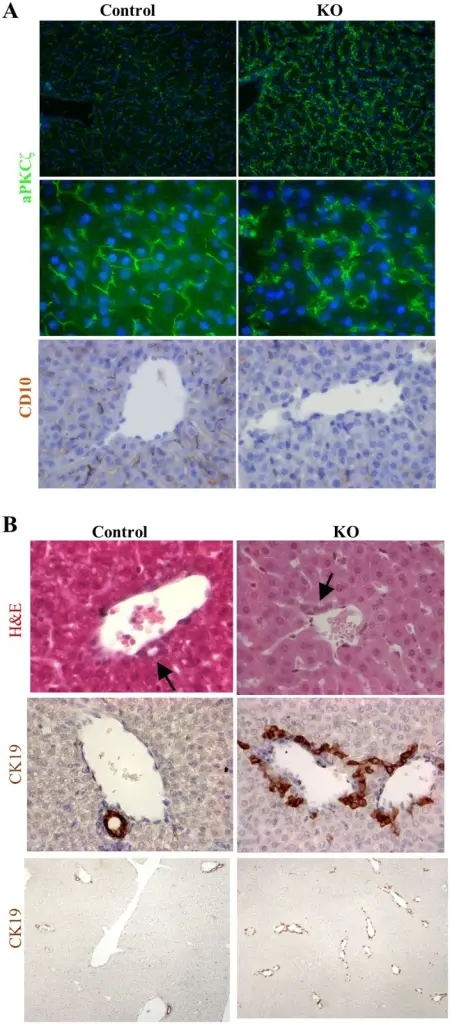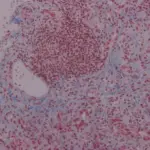Bile and bilirubin are formed by the liver.
How are Bile and Bilirubin Formed?

Lkb1 is required for canaliculi formation and intrahepatic bile ducts morphogenesis. (A) Top panel: representative images of 3-week old control and mutant LKBKOlivemb mice liver sections stained with the apical marker aPKCζ. Note the elongated canalicular network and the tortuous dilated bile canaliculi in control and mutant animal, respectively. Bottom panel: representative images of 3-week old control and mutant LKBKOlivemb mice liver sections stained with the anti-CD10 antibody. Immunohistochemistry evidences a delicate canalicular network at the apical pole of the hepatocytes of the control animal. In KO mice, the staining was lost. Top: low magnification, middle, and bottom: high magnification. (B) Top panel: Hematoxylin-eosin (H&E) stained sections of 3-week old control and mutant LKBKOlivemb mouse liver. Middle and bottom panels: Cytokeratin 19 (CK19)-stained sections of 3-week old control and mutant LKBKOlivemb mouse livers. Note the well-formed and mature bile ducts in the control mouse and the numerous ductal plate-like structures around the portal tract in mutant mice. Top two panels: high magnification, bottom panel: scanning magnification. LKB1 and Notch Pathways Interact and Control Biliary Morphogenesis: Just PA, Poncy A, Charawi S, Dahmani R, Traore M, Dumontet T, Drouet V, Dumont F, Gilgenkrantz H, Colnot S, Terris B, Coulouarn C, Lemaigre F, Perret C - PloS one (2015). Not altered. CC.


